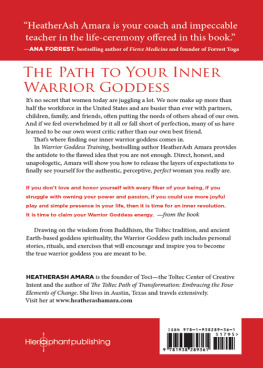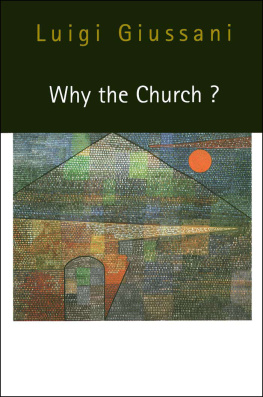Published by
REAKTION BOOKS LTD
Unit 32, Waterside
4448 Wharf Road
London N1 7UX, UK
www.reaktionbooks.co.uk
First published in English 2020
English-language translation copyright Reaktion Books 2020
Translated by Christina MacSweeney
Copyright Luigi Amara 2014
Originally published by Editorial Anagrama sa
c/o Indent Literary Agency LLC
This publication was made possible by the Secretara de Cultura of the Mexican Government, via the Fondo Nacional para la Cultura y las Artes, with a grant from the Literary Translation Program (PROTRAD)
All rights reserved
No part of this publication may be reproduced, stored in a retrieval system, or transmitted, in any form or by any means, electronic, mechanical, photocopying, recording or otherwise, without the prior permission of the publishers
Page references in the Photo Acknowledgements match the printed edition of this book.
Printed and bound in/by
A catalogue record for this book is available from the British Library
eISBN 9781789143478
An Otherworldly Prologue
I f I had to decide on an object to describe the meaning of life on Earth, a postcard to send to Mars about our most dearly held obsessions, my first choice would be the wig. Mammalian yet artificial, an insignia of power and, at the same time, complicit in a malleable, remote but enduring notion of beauty; reflected in the false head of hair apparently en route to a life of its own are our excesses and fears, the deployment of the body for purposes of seduction, plus the psychological traumas of that simulacrum of autumn known as baldness.
For all that it reveals of our propensity for duplicity and simulation, for the way in which it crystallizes in a tangled mesh that somehow seems to be ready to both pounce and caress the deviation and concerted exuberance of that world within the world we have agreed to call second nature (but could also be termed theatre); for all those reasons, I would choose the wig as our sidereal representative, as a cosmic calling card. I like to imagine the wig crossing the indifference of space and, after many years, arriving in another galaxy; I like to imagine the amazement of some extraterrestrial being holding in its hands, in its perhaps smooth, horrified extremities, that light, crouching mat of hair that, while perhaps indecipherable, speaks of a hirsute, stylized world where nothing is what it seems, and while attenuated (possibly due to its participation in a primary need, in the unsilenceable demands of desire) is still convincing.
More than an illustrated and, it has to be said, slightly disjointed history of the mania for hairpieces a sort of reflective mosaic or tapestry of a topic one might describe as outmoded this is a personal book, an intimate, possibly overly insistent gallery surrounding a single object. Rather than a horizontal museum, a motley collection of recurrent weaknesses and fetishes, and making light of the risk of the monomania and anachronism involved, I opted for a journey into the interior of one of those recurrences, a descent down the plait of associations and perplexities in which I see myself reflected when I meditate on the wig, when I allow myself to become entangled in its incitements, in its improbable density, while converting it into an object of thought. And in the end, if Baudelaire discovered there is a whole world in a head of hair, why not go one step further and tell the story of the world in terms of the wig, in terms of the hair that stands alone, detached from the shaggy hide, and thus the body; in terms of the head of hair elevated to a talisman, a small but vast cosmos?
Although this is, in some way, an autobiographical book, its germ is not, as far as I know one should not pass up the opportunity of a nod to the psychoanalyst to be found in any shameful paraphilia or a more or less controlled, more or less domesticated propensity for cross-dressing. Neither did it have its origin although this must in some way have been involved in reading the epigram by Carlos Daz Dufoo Jr I have used as a sort of epigraph, an authentic one-line novel to which these pages may be nothing more than a rather bulky footnote, an offcut that is possibly as unwarranted as it is redundant. I suspect this book in fact began when long hair was still fashionable, in those not-so-distant times when ones locks could be a symbol of rebellion. One evening I realized that if we find liberating qualities in long, loose hair, or a certain stridency in dyeing it green and moulding it la barbed wire, the wig introduces an unexpected distortion, an ambiguity that makes incursions into the province of disguise: beyond fashion and the codes of cosmetics, the wig embodies the paradox of a portable, detachable freedom, of a, one could say, two-faced rebellion festive and extraordinary due to its carnivalesque aura no less destabilizing for being removable.
Alongside its antecedents only in appearance frivolous in the old French salons, I noted that the wig was more suited to the profligacy of licentious nights than to freedom as a revolutionary value and, attracted by its artifice, the fascination of its deceptive superficiality, I began to wonder if the symbolic importance of the guillotine during the French Revolution might be that it did away in one stroke with the reign of wigs; that, under the somewhat drastic pretext of decapitation, it put an end to those outlandish crests that could scarcely dissimulate their condition as crowns, and which, for a couple of centuries, dominated social life, just as they had in ancient Egypt.
On that day, I fell under the spell of the wig, and cherished the hope of writing a book that, in addition to leading me to examine the customs of a variety of different eras, would oblige me to reflect on a strange presence, generally disdained as superfluous, and unconditionally expelled from the realm of the thinkable. A language in itself, a complement of the mask made from the very material of our own sebaceous glands, an identity toy, the wig is usually marginalized by serious research projects despite the fact that the first known one dates from 3000 BC, and that at certain moments in history it spread like a hydra, the number of whose heads corresponded to those of the population who gladly donned it even those dealing with the alterations to which the body is subjected, those that investigate the boundaries between the organic and the synthetic, the carnal and the prosthetic, what is original to the human species and what is added.
If one of the key questions of modernity was related to the validity of the conception of the mind as a blank sheet, an unmarked surface without predispositions or impressions, it is hardly surprising that, in relation to one of the principal problems of thought, the host of philosophers of those elegant, optimistic times (all under the effects of the fever for false hair, the distinction of capillary laurels dusted with white powder) did not extend their research to the body itself the other, now scandalous, half of the dualism and, in spite of the exaggerated evidence resting on their heads, agreed on its neutrality, on its condition as a mere datum, as if the body could be on the margins of the inscriptions of power, and free from symbolic imprints, the configurations of language, and even collective ailments.















